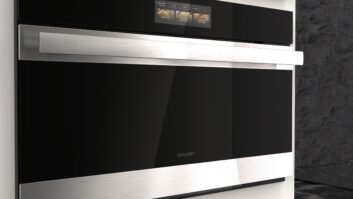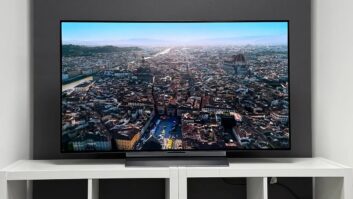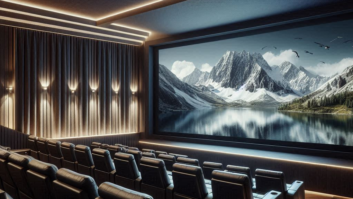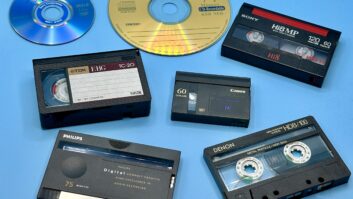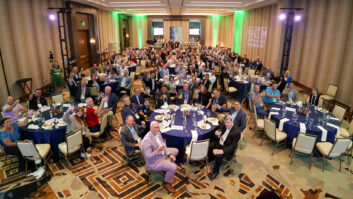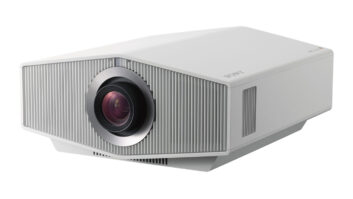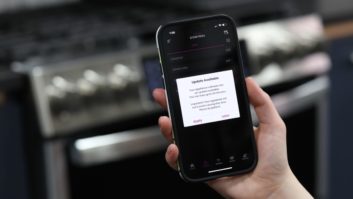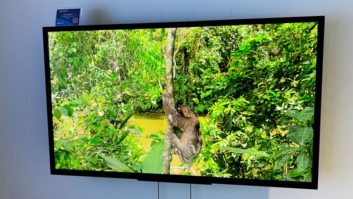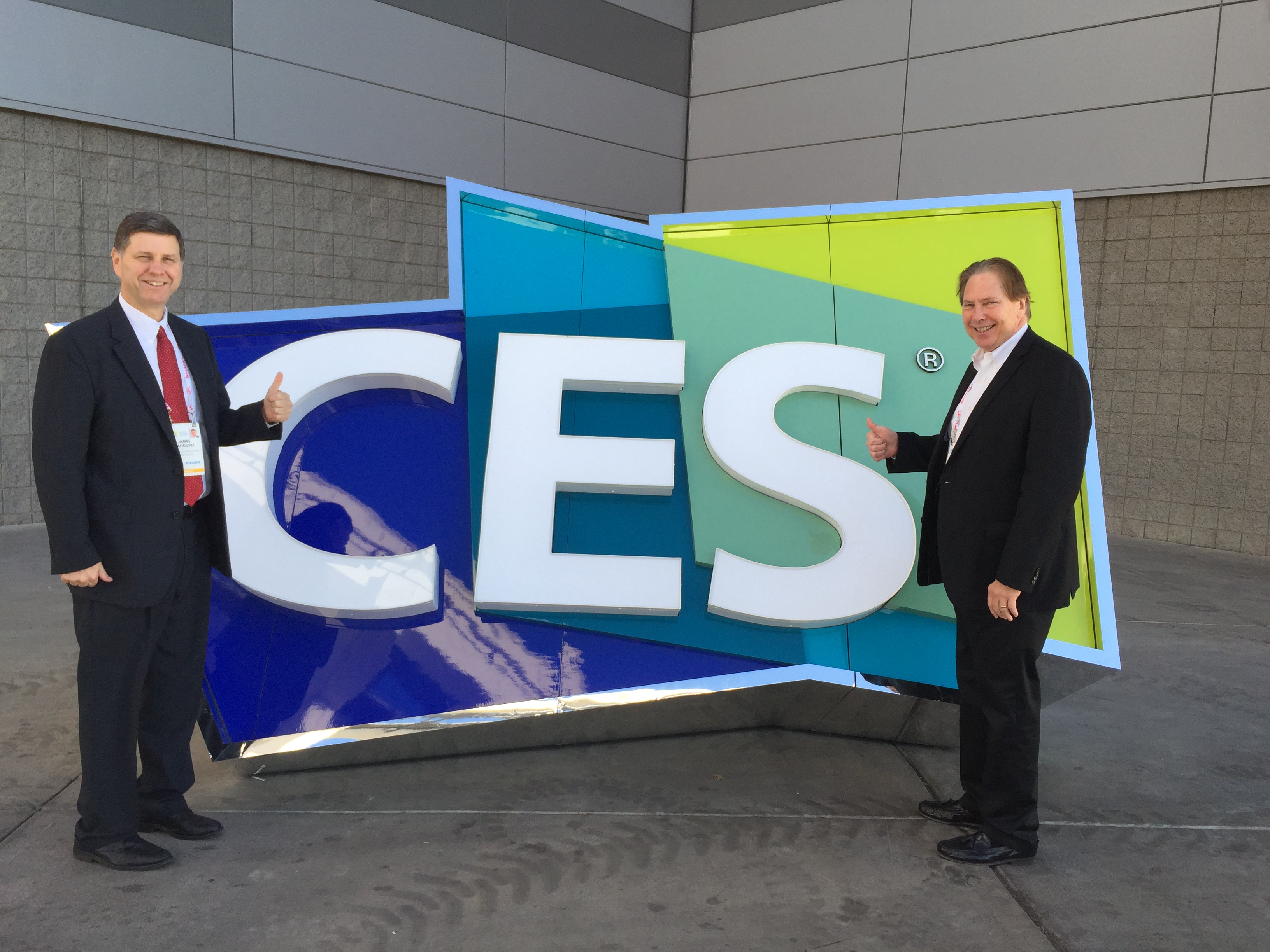
After a four-year hiatus from CES, Sharp returned to the Las Vegas Convention Center show floor in a big way in January. Its booth featured not only next-generation displays and video technology, but also a full suite of new major appliances.
TWICE caught up with Peter Weedfald, sales and marketing senior VP of Sharp Electronics Marketing Company of America, and Jim Sanduski, president of Sharp Home Electronics Company of America, to talk about the show, the company’s plans, and what the kitchen of the — very near — future could look like.
What follows is an edited version of the conversation.
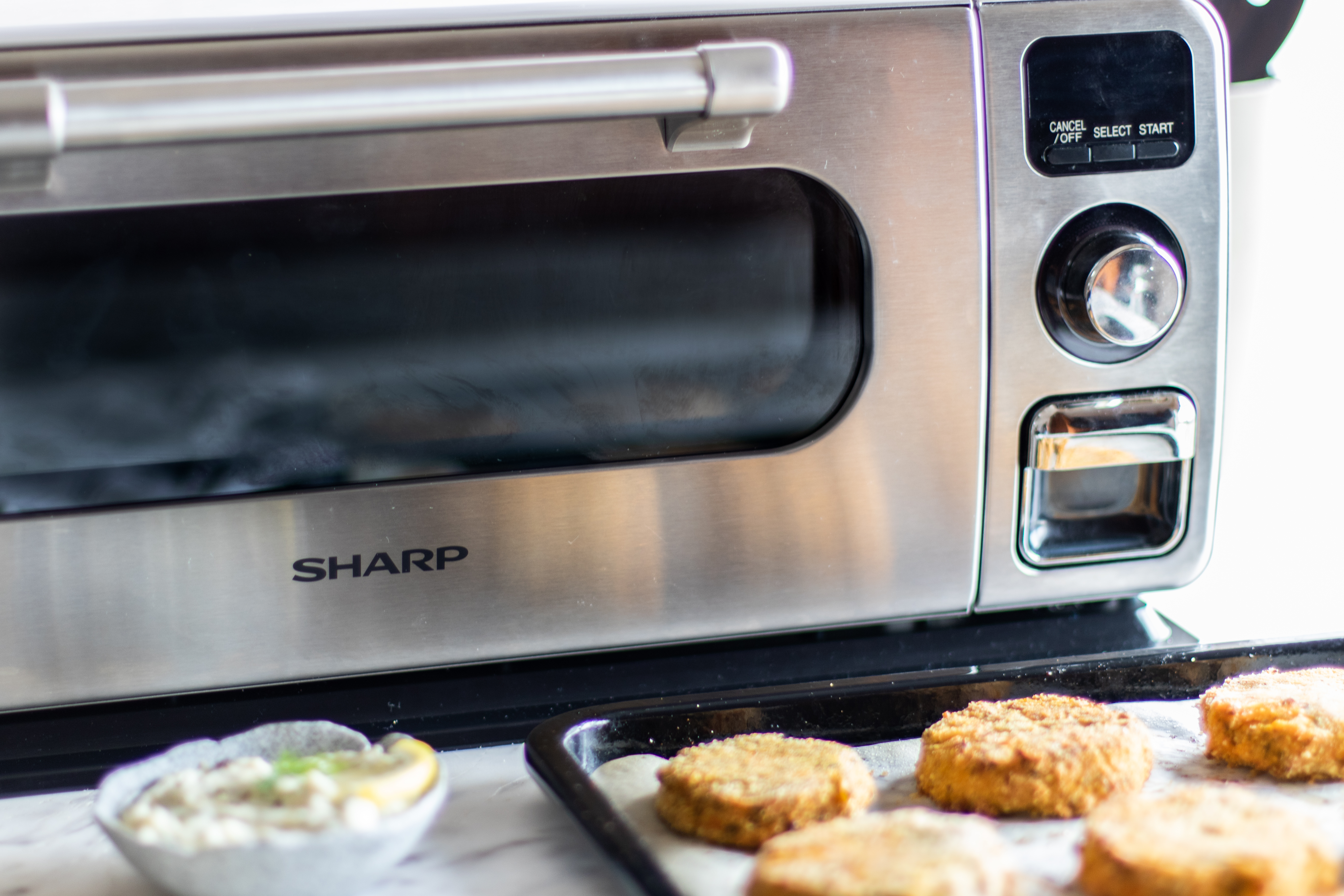
TWICE: How was your CES?
Weedfald: It was the first time back to CES in four years on the floor, and we were proud to have a whole family of Sharp-related products, from B2B, to B2C, to home appliances to our new 8K ecosystem, to IoT products.
TWICE: What motivated you to return?
Weedfald: Over the last four years we’ve had a lot of positive growth across the divisions. Our profitability has come back to the Sharp Corporation. And, as you know, we have a two-thirds investor [from] back in the middle of 2016 who is very anxious to ensure that Sharp is back on the march. So [we took] advantage of the largest consumer electronics show in the world to sort of have a coming-out party. And that coming-out party allowed us to talk on both the B2B and B2C sides and also on the 8K ecosystem and IoT. More importantly than that, we have resellers, we have dealers, distributors, customers, partners, and it has really, really super motivated them to lean in harder than ever before.
Sanduski: In times before when we’ve been on the CES show floor, it’s been all about TV. As you well know, starting in the beginning 2016 we entered into a trademark license agreement, so we’re no longer working in the direct manufacturing/marketing of Sharp-brand TVs here in North America and in parts of South America. So we did take a hiatus from the show floor. But this year we thought it was the right time for us to come back.
We’ve been showing 8K since CES 2013. … And for us at CES 2019, this was our opportunity to not just talk about 8K displays — because we did show those — but part of our motivation in coming back this year is that we really wanted to talk about the 8K ecosystem. Sharp is a Japanese-based company, and the Summer Olympics will be in Tokyo in 2020, and the games are going to be broadcast in 8K.
See also: 10 Major Appliance Movers & Shakers In 2018
In our booth we had an 8K Sharp broadcast camera, which is obviously a B2B product. But we also showed how we were developing this entire 8K ecosystem, from the capturing of an 8K image via the broadcast camera to editing to storage to broadcasting to reception.
We thought the time was also right because this will be the year we’ll be bringing out our first smart products. We were showing for the first time an entire kitchen suite of products. In the home appliance space, we’re moving beyond being primarily a microwave oven-based technology brand to one in which we’re offering products in the entire kitchen suite, such as single wall ovens, double wall ovens, cooktops, dishwashers and refrigerators.
And you saw a few connected products. We showed our second-generation built-in Superheated Steam Oven, which is connected and launches later this year. It’s done in partnership with SideChef, which is a partnership we announced a little over a year ago. We also showed a connected microwave drawer that will also come out later in 2019.
TWICE: What does consumer readiness for smart major appliances look like right now? What are some of the challenges or barriers that are holding back adoption?
Sanduski: Smart connectivity is already happening right in major appliances. If you look around the landscape today, there are smart appliances that exist, and it’s inevitable that down the road most every kitchen appliance — certainly a major appliance — will be a connected device. What will happen in the kitchen is very similar to what has already happened in the living room with the television. Basically every television you buy today is a connected television.
I think with major appliances in the kitchen, all of us are still working to define that killer application for smart connectivity. For television, the killer app was enabling over-the-top streaming capability, like Netflix. And that continues now to be expanded upon with a whole series of over-the-top streaming services. In the kitchen, connectivity is taking the form, at first, of being able to use your smartphone or use your voice through a voice assistant to be able to control your connected kitchen appliance.
One very simple application is the fact you can save [time] if you’re 15 minutes away from home, and via your app you can remotely preheat your oven to whatever temperature you’re planning to cook when you get home.
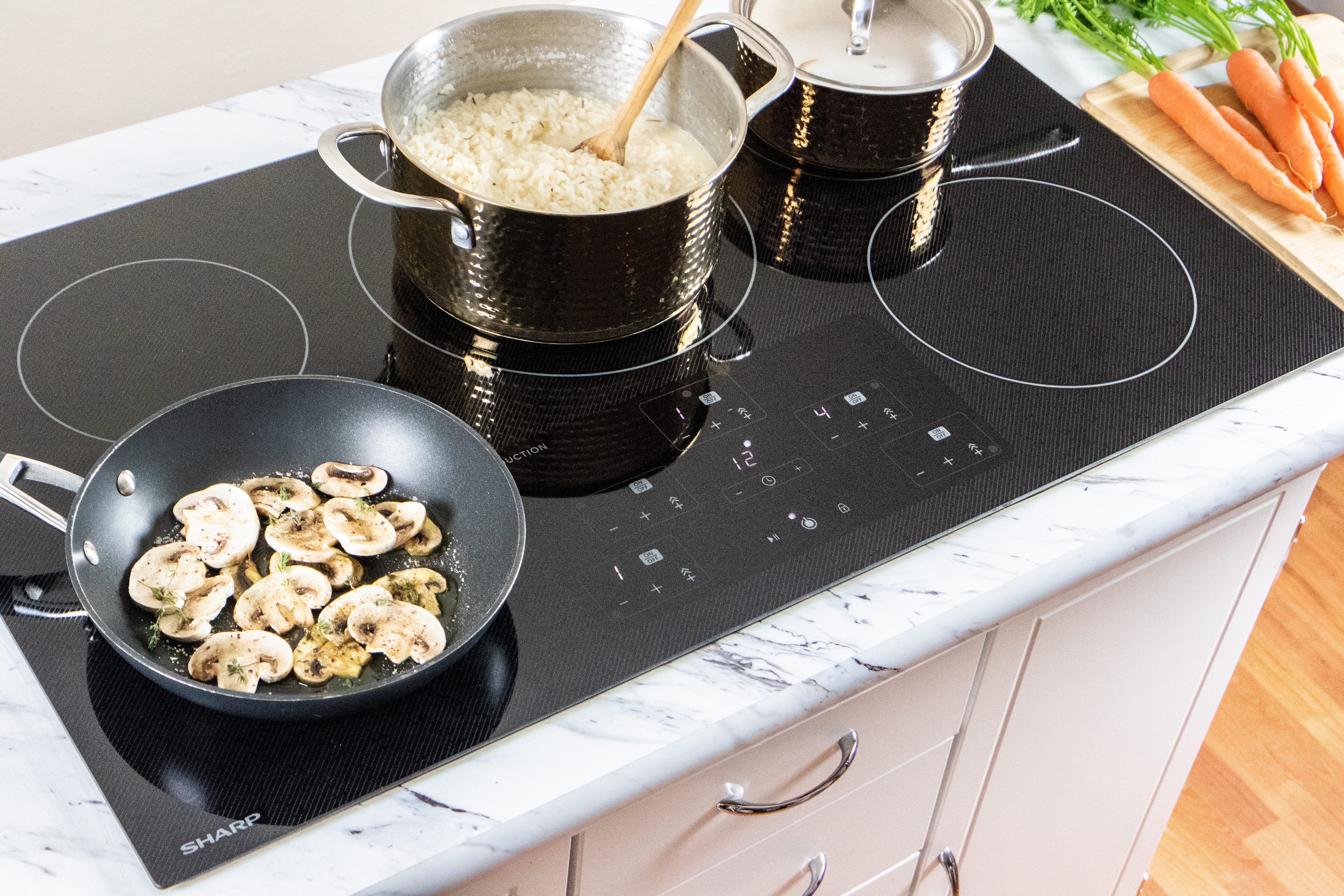
But we think it needs to move beyond that. We’re really focused on ensuring that we don’t just put in connectivity for connectivity’s sake; we don’t want it to just be a ‘gee whiz’ thing that consumers use once or twice but then forget about because it’s easier to do it the manual way. We really want to try to add value when we think about our smart connectivity solution — so in addition to being able to operate via an app for your product, we also want to enable easier cooking.
With our partnership with SideChef … we’re tying in what I call the last 3 feet to the appliance: Through this app and through SideChef, you’re guided through how to make a dinner dish, and then that last 3 feet is when you’ve done all the preparation, the app will automatically set the time and the temperature for the connected appliance.
Weedfald: Consumers are very quick to change and comply. For example, we told consumers that now they’re going to check themselves out, and there won’t be anyone behind the cash register. All these stores instantly changed the way we actually articulate ourselves in a store because when we’re ready to check out, we physically go and check out by ourselves. That’s how fast consumers can comply. Nobody is standing in front of any of the retail stores marching up and down the street saying we won’t shop here because you made a change.
Whole Foods is the second example. You walk in, and they’re testing it in many stores, you drive your wagon through and you drive right out. No need to stop to even see a cash register or check yourself out — it’s automatically being charged to your Whole Foods card.
So Stage 3, if we take the long view about how consumers are going to feel, what is the killer app? In my humble opinion, it’s voice activation. The ability to talk to these devices is going to be very important, so we have a platform we’re building out. But the other one is that as you go through Whole Foods, something is reading the food that’s in the cart. A barcode or some other device. And so I would imagine, down the road, you go to the refrigerator, you pull out a chicken, and it automatically is activating the oven. You cook your chicken by setting it to 450 for 15 minutes, and [when] you pull it out of a refrigerator, it knows it from the pattern and goes ahead and turns on the oven.
I think the long view is that eventually your smart kitchen is going to recognize and realize what’s in your kitchen and literally take a lot of the heavy lifting and work away from you because if you pull a chicken out, it’s going to go to SideChef. It’s going to know the chicken weighs 2 pounds. It’s going to [ask] “Would you like this cooked with the paprika or would you like it cooked with the fancy sauce?” And if [you say] fancy sauce, now the oven knows it’s going to cook it for another extra minute.
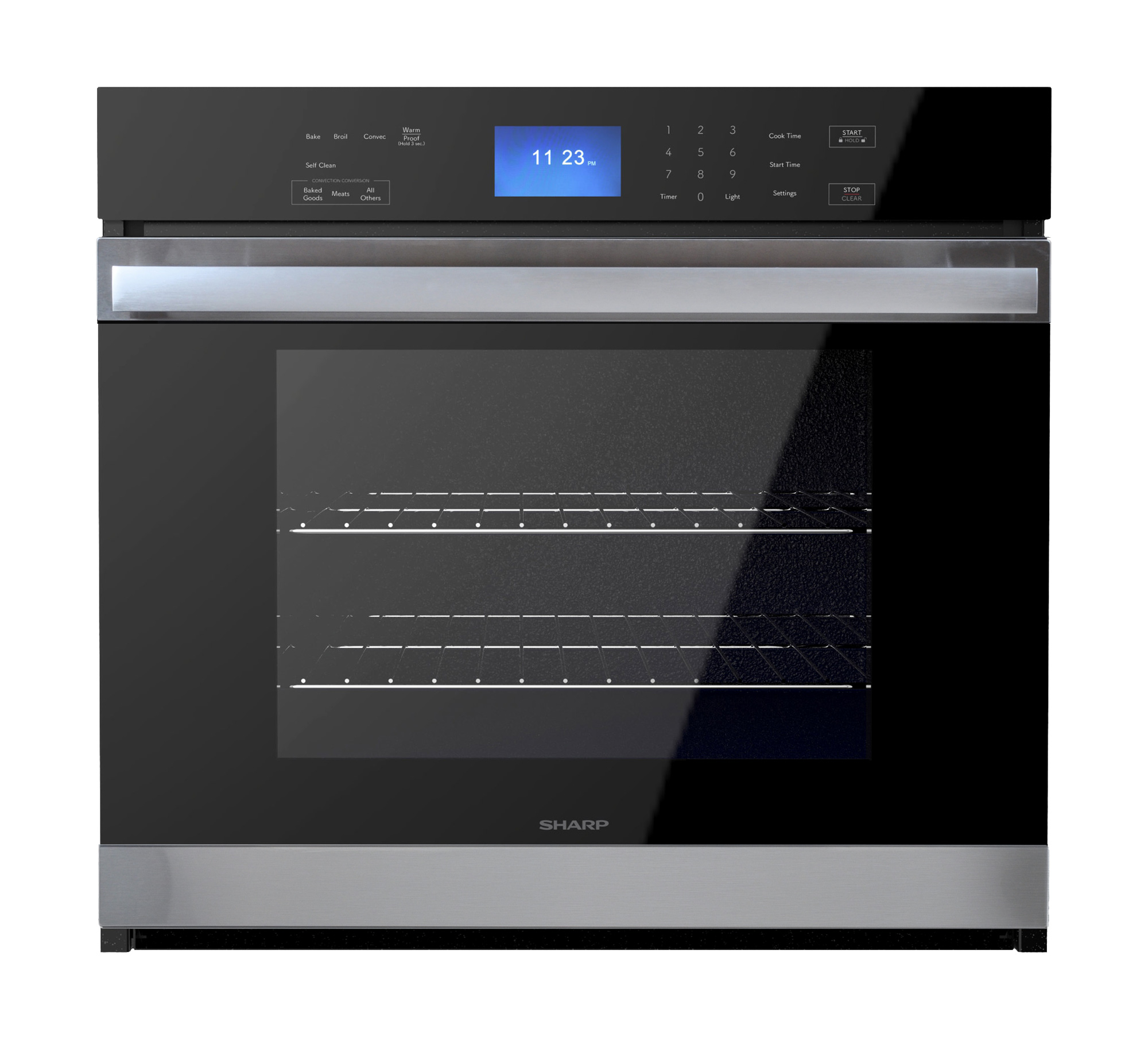
Sanduski: I think over time you’re going to see more and more sensors put into connected products, whether they be cameras, weight sensors or wireless temperature probes. There will also be things such as food recognition.
Weedfald: And people recognition.
Sanduski: You will have a profile. They know Jim likes his steak cooked medium well, so when you put in the oven and the oven recognizes that this is a steak for Jim, it’s able to precisely cook the food and then stop cooking when it reaches the perfect temperature.
TWICE: How far away do you think we are from achieving that scenario?
Weedfald: I think within 24 months. [And] I think we’re going to start seeing renditions of that almost in the next six months.
Sanduski: I would say maybe two to three years. It’s all very good for consumers.
TWICE: What do you think retailers should be aware of when it comes to doing a better job of selling this category? What should they prioritize in order to sell these connected appliances?
Weedfald: It’s very early in the cycle for them to get to fire it up, and I’ll give you three reasons. One: We need a universal platform because if somebody has a GE refrigerator and a Sharp built-in oven, how do they talk to each other? The sales organization really needs to understand how that works on the floor.
No. 2: There’s a lot of learnings they have to have. This is not for the faint of heart. I know that Best Buy has some IoT products on the floor, and some of the other dealers have it, but you literally have to become a subject matter expert in order to sell it.
When it becomes easier in three years, it will be different because it will be a lot of voice activation. But today you literally would have to show it through an app. You’d have to explain what it is, and consumers at this point are buying much more on the emotional capital and look and feel and the brand — much less than the speeds and feeds of what’s inside. … Simple is as important to the consumer as it is to the salesperson on the floor.
See also: Are Consumers Ready For Connected Home? All Signs Point To … Almost
And then No. 3: It’s going to have to have some scalability for salespeople to really jump in to be the voice of the future on the floor — meaning it can’t just be one or two [products].
They’re making commissions and they’re supposed to articulate and promulgate the products; there needs to be sort of a maturing of that platform, so when consumers come in they want to start saying, “I want a smart kitchen. I want a kitchen that does this and what I read about it.” There isn’t enough promulgation out there to consumers on the editorial side just yet simply because there are not enough platforms or constructs to take advantage of what we’re calling IoT or the smart kitchen.
Once that starts maturing across all the different brands, and they start talking about it, it will be in really good shape.
Sanduski: I think longer term, but it’s never too early to start thinking about it. It may seem complex to the consumer, so they’re going to have questions, and so I think retailers would be smart — no pun intended — to start to refit their floor in maybe a kitchen vignette. Take an appliance brand that has a connected story across multiple appliances and set up the store to where during the sales process, the salesperson can say, “Let me explain how this manufacturer’s smart platform works,” and show how you can go from food in the refrigerator to preparation on the stove to final cooking in the oven. So the consumer can see the value-add in making a purchase of smart appliances.
TWICE: Are you able to share feedback you’ve received from retailers about the challenges of servicing smart appliances? How do you take that into consideration when you’re developing these products?
Weedfald: I do want to make a data point that from the dealers that I’ve spoken to, they are very fired up on the post[-sale] opportunities for the new smart-home platforms that are coming. And the reason is they view that as a revenue- and profit-generating opportunity. Meaning: “Jim, here’s your built-in kitchen. Here’s your instructions. Oh, by the way, if you’d like, we can send out a service representative to just train you on how you can articulate and navigate across the smart platform.”
So that becomes an advantage point for a dealer to say not only we’re going to sell you a smart platform kitchen, but we’re going to train and develop it. We could even have classes in their building where people come in and pay. But I think they see it as an after-sale market.
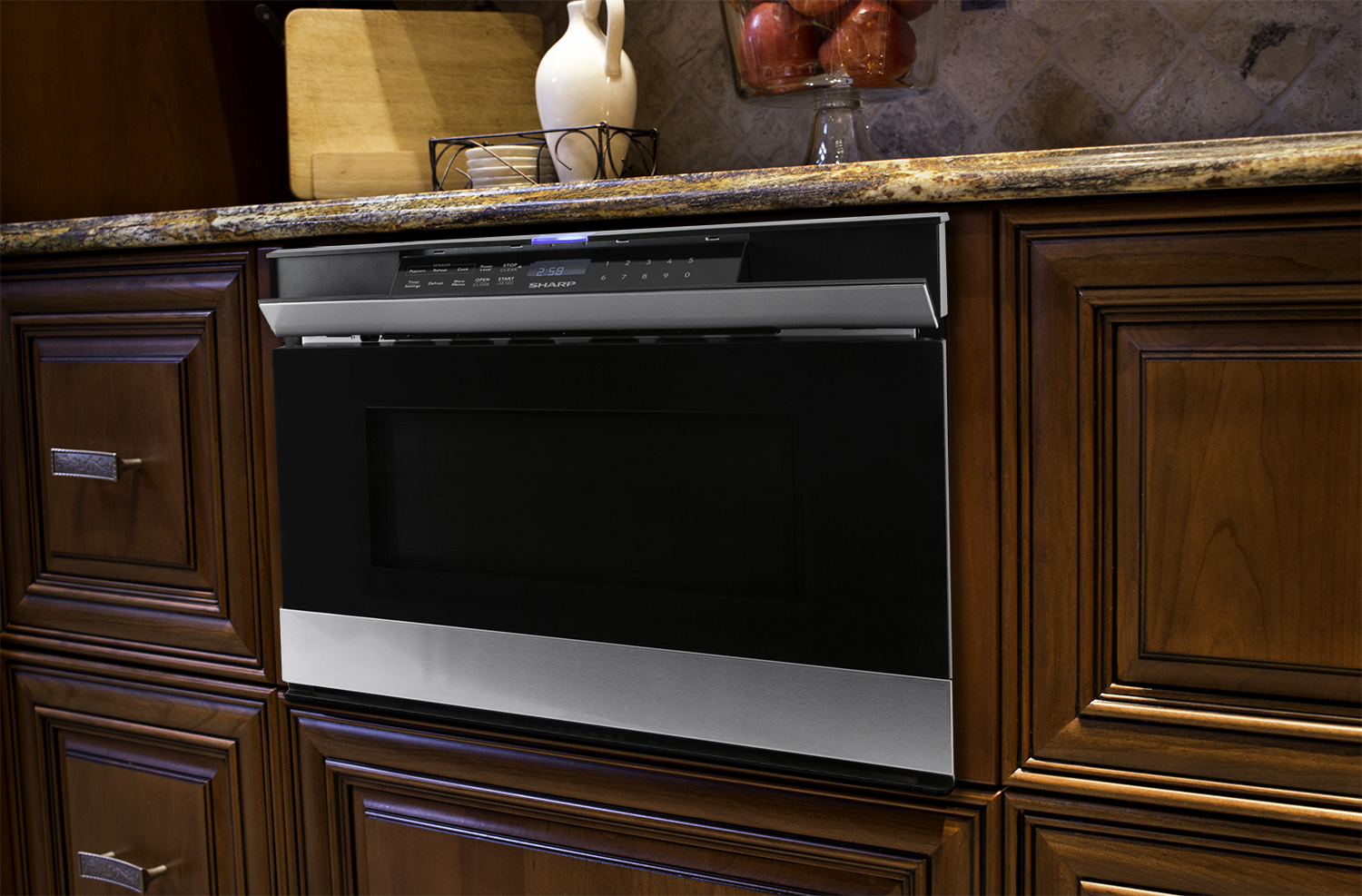
Sanduski: If you think about the old days when you sold a non-connected product, if something wasn’t working right, that person would call the customer service line of the manufacturer and they would go through and diagnose what the problem was. When products became smart, you also now have the added complexity of trying to figure out whether the malfunction of the TV was due to maybe an improper connection to a Wi-Fi network. So it became a little bit more complex to diagnose.
But we have experience with that — particularly with televisions because they became connected some 10 years ago — so as we think about connected major appliances in the kitchen, we’re very focused on making sure that the customer’s ability to connect that product to their in-home Wi-Fi system is simple. If they have difficulty connecting to the Wi-Fi system, they’re going to call the manufacturer. They’re not going to call the router company.
See also: To Outsource Or Not To Outsource?
The second thing is building in sensors that can generate error codes, so that when the consumer calls with a problem with their device, the rendering of an error code via their smartphone will simplify the diagnosis of what the problem was.
Weedfald: There is a huge opportunity around sensors for not only remote service and repair but also for analyzing performance data. If you connect back to the dealer, eventually you can say, “I’m just sending you an email to let you know you’ve used your microwave oven 300 times in a month, and it appears you’re going to be ready for a new microwave or we need to change the filter. Click here and you can buy a new filter, which will ship to you or we can come install it.”
Self-diagnostic is really important. You can check energy efficiency. And part of the sensors will be around connection to the grocery store — connecting to your favorite foods. Those sensors will allow some automatic work, which you know Amazon’s already are ahead of with their Dash buttons. So there are a lot of reasons for these sensors that will be a benefit to consumers, and I think a huge benefit to the retailers themselves.
TWICE: What can you share about Sharp’s plans for 2019, 2020 and beyond? What are the most important takeaways?
Sanduski: In the home appliance space, Sharp is firmly committed to moving beyond being primarily a microwave-oven-based technology brand here in the United States. You’ll see as we go through 2019, 2020 and beyond, products in categories where we can offer real differentiation, like, for example, our next-generation built-in Superheated Steam Oven that will be coming in 2019.
Also I would say “Stay tuned” in terms of developments with regards to the family room as it relates to displays.
You saw 8K displays at CES. There was no specific announcement that we’re making with regards to 8K displays for the North American market with respect to the trademark license agreement that’s currently in effect. But at some point down the road I think you can expect to see Sharp back in the market with 8K displays.
Weedfald: The philosophy and the truth of the matter is that products make brands. Brands do not make products. You can’t say, “Hey, look at the brand,” and do a lot of advertising on your brand if your products are not a market maker, market taker.
Our goal is to bring products to market that build brand infatuation for consumers, for retailers, for dealers, for the retail channel as we look out to 2020 and 2021, and I think that is a stake in the ground. You’ve got to have the most delicious cosmetics and designs, the features and the benefits — a smart world.
I think that’s what keeps us up at night — to make sure what we bring to market makes us known as a world-class provider of exceptional products that are simply better for living. Our corporate tagline is “Be Original.” And those are more than table stakes. Those are competitive advantages. If we can do that successfully, which we intend to do, then we will be able to grow our market share.




